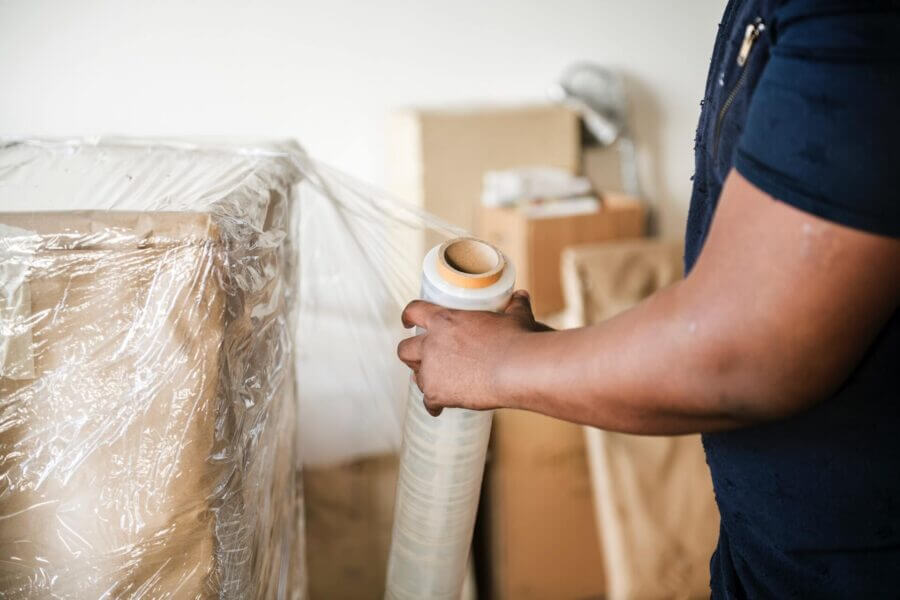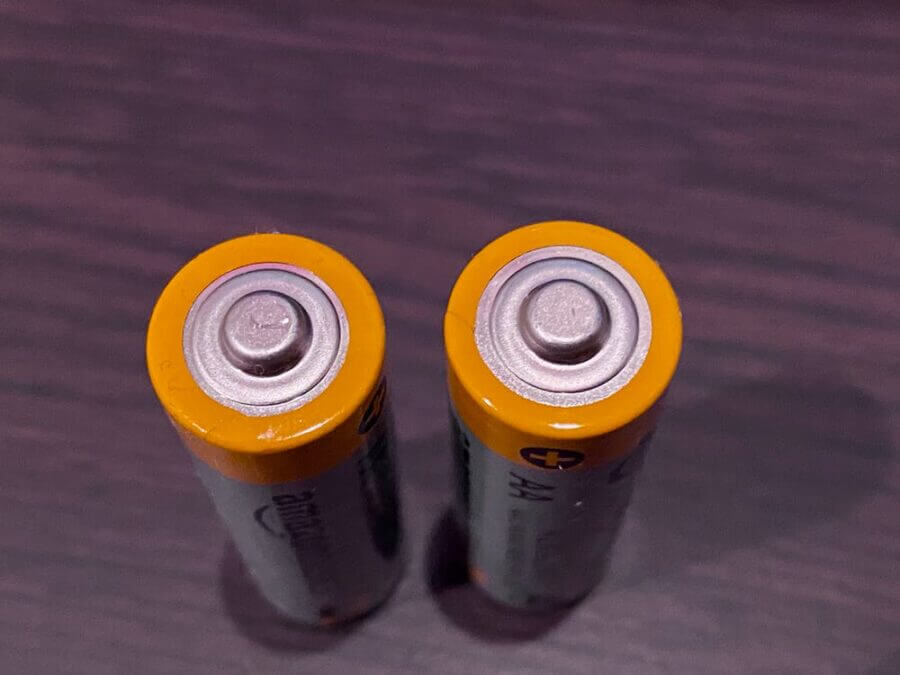

A Guide to How to Pack Electronics for Moving
Posted in How-to,Moving Tips & Tricks on March 31, 2022
In this technological age, a lot of household items are electronic devices that we use on a daily basis. Therefore, you will have to know how to pack electronics for moving if you have decided to change your home address. Packing electronics is not difficult, but there are certain methods that you need to be aware of in order to ensure their safety.
When packing electronics for a move, it’s important to take extra precautions. Always disconnect all cords and cables before wrapping the device in anti-static bubble wrap and tissue paper or cloth material. Place the wrapped device in a sturdy box, completely lined with packing foam or extra padding, and seal it up with packing tape. Make sure to label the box “Fragile” to ensure movers handle it with care during transport. With these steps, you can be sure your electronic items will arrive safely at their new home.
It Is Important to Know How to Pack Electronics for Moving as They Can Easily Get Damaged
A huge part of your moving-out list will be taken by electronic devices. It is best that you know how to prepare electronics for a move. They should be handled with the same care as if you are packing fragile items. Frequently, the damage that can occur during the process of transportation is irreparable. Therefore, take these relocating tips seriously if you want to move your devices safely. You should take into consideration the following points:
- Appropriate relocating materials and tools needed for electronic devices,
- The best methods that you can use to move such devices,
- Things that should be avoided when relocating such items.
When you are organizing your move, a lot of thinking goes into packing. The household inventory list nowadays consists of many electronic devices that we use on a daily basis. We could say that they have become relocating essentials in the twenty-first century. However, as mentioned above, they can easily be damaged, and replacing them with new ones can be quite costly. You certainly would not want additional expenses when moving across the country.
Having the Proper Packing Materials Is Crucial When Packing Electronics
Can you put electronics in bubble wrap? The answer is yes. Moreover, if your devices are not covered with protective layers, the chances they will get damaged will increase significantly. Another great piece of advice that you should follow is to use their original packaging if the boxes have not been thrown away. Here is a list of some of the most common materials and tools that you will need:
- Boxes, if possible, the original ones,
- Different types of protective layers like packing paper or bubble wrap,
- Scissors and tape,
- Markers and stickers,
- Tools for lifting heavier objects.
The majority of these things can be rented or bought from your local storage company. Nevertheless, do not forget to take into account this expense when you are relocating to a new home.
How to Prepare Electronics for a Move – It Is Best to Precisely Label Each Item Before Placing It Into a Container
A frequent relocating mistake that many people make when moving cross country is not properly labeling cables, chargers, or other external gadgets. This can create a lot of confusion when you arrive and begin unpacking after relocating. You will waste a lot of time finding out which cable is for which device. Therefore, before you pack, place a sticker on every item.

You Need to Know How to Pack PC Monitors and TV Screens Appropriately
It is not the same whether you are packing your TV, PC setup, or washing machine for relocating. Different devices require different equipment and methods that you need to use if you want to be one hundred percent sure that they will arrive at the destination in good condition. This is especially important when long-distance moving is in question.
Pack Every Component of Your Home PC Carefully When Moving
You will need a few boxes, bubble wrap, and stickers for your PC. Disconnect everything and meticulously label each component. Your PC will have a lot of cables and wires that can easily get mixed up. Carefully cover your monitor with a lot of bubble wrap before placing it into a box. After you are done with a monitor, you can move on to other sturdier components.
There are a few relocating hacks that people like to apply when relocating a PC. You could take a picture of the back of your computer case. By doing so, you will know where all the disconnected cables and wires go. Also, many people buy an external hard drive in order to store any valuable data that they are afraid of losing.
Modern TVs Are Extremely Fragile, and You Need to Secure Them
When dealing with a TV, you will need at least two relocating blankets or several layers of quality bubble wrap. Carefully cover your TV and fix the layers with tape. It is also recommended to cover all four edges with any absorbent material such as cotton wool or foam. This will greatly minimize the impact of any jolts that may occur during transportation.
Ideally, you should have the original packaging of your TV. Furthermore, when ordering a TV, a protective sleeve for the screen should be included in the package. It is highly recommended to first cover the screen with this sleeve and then add other protective layers. Unfortunately, if you do not have either of these, try to find a box that is slightly bigger than the TV and apply extra protection.
Laptops Are Moved Easily and Do Not Require Much Attention
Most laptop owners have specially designed cases for their laptops that ensure their safety during transportation. Moreover, it is likely that your laptop will be beside you when relocating to a new state. In case you have to place it in a box, cover the laptop with a protective blanket or foam. This should be enough for a safe move of your laptop.

Household Appliances Have to Be Prepared as Well for Moving Cross-Country With Long-Distance Movers
The most important packing tip when relocating kitchen appliances is to empty and clean them. No long-distance movers will accept dirty or filled appliances. With regard to their safety, appliances are generally sturdy items that do not easily break. Nonetheless, you have to cover these objects and secure appropriately any fragile components that they may have.
You Will Probably Need to Call a Plumber for Cleaning Devices
When relocating a dishwasher or a washing machine, you will need to disconnect all the pipes and hoses that connect the device to your water supply. The best advice here is to call a plumber because you have to make sure that the water supply is properly closed once the device has been removed. Otherwise, the house can get deluged instantly.
Although washing machines are also quite sturdy objects, the drum can easily get damaged during transportation. Basically, it needs to be firmly fixed so as to prevent any sudden movements. Most of the washing machines come with manuals that instruct you how to fixate the drum. If any tools are needed, they should also be included with your washer.
Stoves Are Probably the Trickiest Kitchen Items to Relocate With Cross-Country Movers
When it comes to relocating kitchen objects, stoves demand a lot of attention. Firstly, you will need to thoroughly clean them. Greasy ovens will not be accepted by any cross-country movers. Then, all components like racks should be separated and placed into another box. Finally, adjust all the dials to their starting position and if the stove has a display, cover it with a layer of paper.
Modern stoves usually have stovetops made of glass, so you need to add several layers of relocating blankets or bubble wrap in order to prevent any scratches. If your stove uses a gas supply, consider also calling a professional to disconnect it and appropriately close the gas outlet.
Fridges Are Generally Sturdy and Transported Easily, but There Are a Few Things That You Must Do Before Relocation
Above all, you have to remove any food that is stored in your refrigerator and clean it thoroughly. A filled fridge is an item that a relocation company will not move. The fridge should be unplugged and left overnight so that ice in its freezer can be thawed completely. Do not forget to place towels or rags underneath as there will be a lot of water dripping down.
Take out any components that can be separated from the fridge. Any glass or plastic shelves or drawers from the freezer should be cleaned separately and placed into another box. Finally, cover your fridge with a protective layer in order to protect it against scratches.
Smaller Appliances Should Not Be a Problem to Move
Smaller appliances like microwave ovens, mixers, and espresso machines are easy to move, but you should treat them as if you were packing glasses when relocating. According to the manual, disassemble the object and clean every part thoroughly. Carefully cover them with protective materials and place them into a crate. Do not forget to label that container as fragile.
Do Not Forget to Use Relocating Tools When Dealing With Heavy Objects
Under no circumstances should you try to move a washing machine or a fridge by yourself. Heavy lifting is not recommended even if you have friends beside you that can help. There are a number of professional tools like utility dollies or lifting straps used for lifting heavy objects. Bear in mind that you do not have to buy them. You can visit your local storage company and rent them. Here is a useful video on how to use a utility dolly.
There Are Certain Things That You Should Not Do When Relocating Electrical Equipment
The question that you are probably asking yourself is, what should you not pack when moving? When it comes to electronic equipment, a huge red flag is batteries. They either have combustible materials or acids inside them. Such chemical substances are strictly forbidden by cross-country moving services. Therefore, remember to remove them before any relocating takes place.
Also, you have to be certain that the storage unit has the right conditions for storing electronic equipment. Firstly, the temperature has to be moderate. Devices can easily malfunction when exposed to excessive heat or cold. Secondly, the humidity has to be controlled. High humidity is dangerous for any electrical or electronic device. Finally, the containers should never be placed on the floor but rather on shelves because of moisture.

Hiring Professional Help for Long-Distance Moving Is Always the Best Option
You will want to make your relocation as stress-free as possible – especially important nowadays when you are relocating during Coronavirus. The best way to do that is to hire professional cross-country moving services. These people are professionals who will move your belongings efficiently, and you will not have to worry about their safety.
As you have been able to read, you have to know how to pack electronics. It is not a laughing matter. However, professional movers can provide you with packing services and appropriate storage services. Both are equally important when it comes to electronic equipment. Therefore, definitely consider hiring movers as they can make your life much easier. Not only will your electrical equipment be sorted, but also all other possessions will be transported with the utmost care.
FAQ
What Materials Do I Need to Safely Pack Electronics for Moving?
To safely pack electronics for moving, you need the following materials: sturdy boxes specifically designed for electronics, packing peanuts or bubble wrap, foam sheets, plastic bags, packing tape, and a permanent marker. It is also a good idea to have a soft cloth or blanket to wrap around delicate items and keep them cushioned.
How Should I Pack Large Electronics Such as Televisions and Refrigerators?
When packing large electronics, such as televisions and refrigerators, it’s important to take extra precautions. Make sure to use cardboard boxes that are slightly larger than the item itself. Fill any gaps with extra padding and secure with packing tape. Additionally, be sure to wrap the item in a protective material like bubble wrap or packing paper before placing it in the box. This will help protect your item from any shocks during transit. Finally, make sure to label the box “Fragile” so that movers know to handle it with care. With these steps, you can be sure your large items will arrive safely at their new home.
Is It Safe to Transport Electronics in Their Original Boxes?
It can be safe to transport electronics in their original boxes, but you’ll want to take extra steps to ensure the safety of your items. Make sure the box is undamaged and that all corners are secure so it won’t puncture easily during transit. Additionally, wrap any exposed parts in an anti-static material like bubble wrap before placing it in the box. Finally, make sure to pack the item in a larger box or crate with plenty of foam or packing materials for extra cushioning. Following these steps will provide the best protection for your electronic items while they’re on the move.
How Can I Protect My Electronics From Damage During Transit?
When transporting electronics, it’s important to take the necessary precautions to protect them from being damaged during transit. Start by using a box that is slightly larger than the item itself and filling any gaps with additional padding and securing it with packing tape. Then, wrap the item in a protective material like bubble wrap or packing paper before placing it into the box. Additionally, make sure to use a sturdy carton and add extra cushioning like foam or packing peanuts for added protection. Finally, label the box “Fragile” so that movers know to handle it with care. With these steps, you can safely transport your electronics while avoiding future damage.
Can I Wrap Electronics in Bubble Wrap for Extra Protection?
Wrapping electronics in bubble wrap is an effective way to provide extra protection when transporting them. Make sure the item is completely covered with an anti-static material like bubble wrap before placing it in the box. This will ensure that the item won’t be jostled around during transit and stay protected from any potential scratches or dings. Additionally, if you’re using packing peanuts or other loose items, make sure they are not in direct contact with your electronic device as this can result in static electricity buildup. Lastly, use packing tape to secure any edges and always label the box “Fragile” for added precaution.
What Should I Do With Cables and Cords When Packing Electronics?
When packing electronics, it’s important to make sure all cables and cords are safely stored. If possible, store them within the designated compartments on your device or wrap them in bubble wrap before placing them inside the box. Additionally, make sure to label any cords and cables so that you know which ones go with which device. This will help to avoid any confusion in the future. Once everything is placed securely in the box, use packing tape to secure any open flaps or folds for added protection.
How Can I Safely Pack Fragile Electronics Such as Laptops and Tablets?
Packing fragile electronics such as laptops and tablets requires extra care and attention. Start by making sure the item is switched off and all cords are disconnected. Next, wrap the device in anti-static material like bubble wrap for adequate protection when being transported. Once you’ve secured the device with bubble wrap, place it in a box that fits its size snugly so that it won’t move around during transit. Finally, use packing peanuts or paper to fill any empty space inside the box, and make sure all compartments on your device are securely closed before taping up the top of your box.
What Should I Do With Electronics That I Won’t Be Using During the Move?
If you won’t be using your electronics during the move, you’ll want to make sure they are properly stored and secured. Start by unplugging all cords and any other attachments from the device. Next, store the item in its original box or an alternative clear plastic container with a lid. Place some paper inside of the container to cushion and protect the device from any vibrations that may occur during transit. Finally, tape it securely with some packing tape for added protection before placing it in your moving truck or storage space.
Can I Pack Multiple Electronics in One Box or Should They Be Packed Separately?
When packing multiple electronics in one box, it’s important to make sure the items fit snugly so they won’t move around during transit. Start by wrapping each device separately in anti-static material such as bubble wrap and then place them inside a larger box with some packing peanuts or paper filling any empty space. This will help to provide extra cushioning and support should your items be knocked around during your move. Finally, make sure all openings are securely closed before taping up the top of your box.
Is It Necessary to Label Boxes Containing Electronics to Ensure They Are Handled With Care?
Absolutely! Labeling boxes containing electronics will help ensure they are handled with care throughout the moving process. You can use a simple label indicating that fragile items are inside, such as “Fragile – Electronics”, and place it on each side of the box to alert any handlers of its contents. This way, you can rest assured your items are being safely transported from one location to the next.




